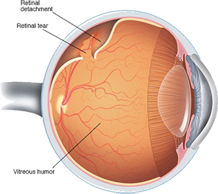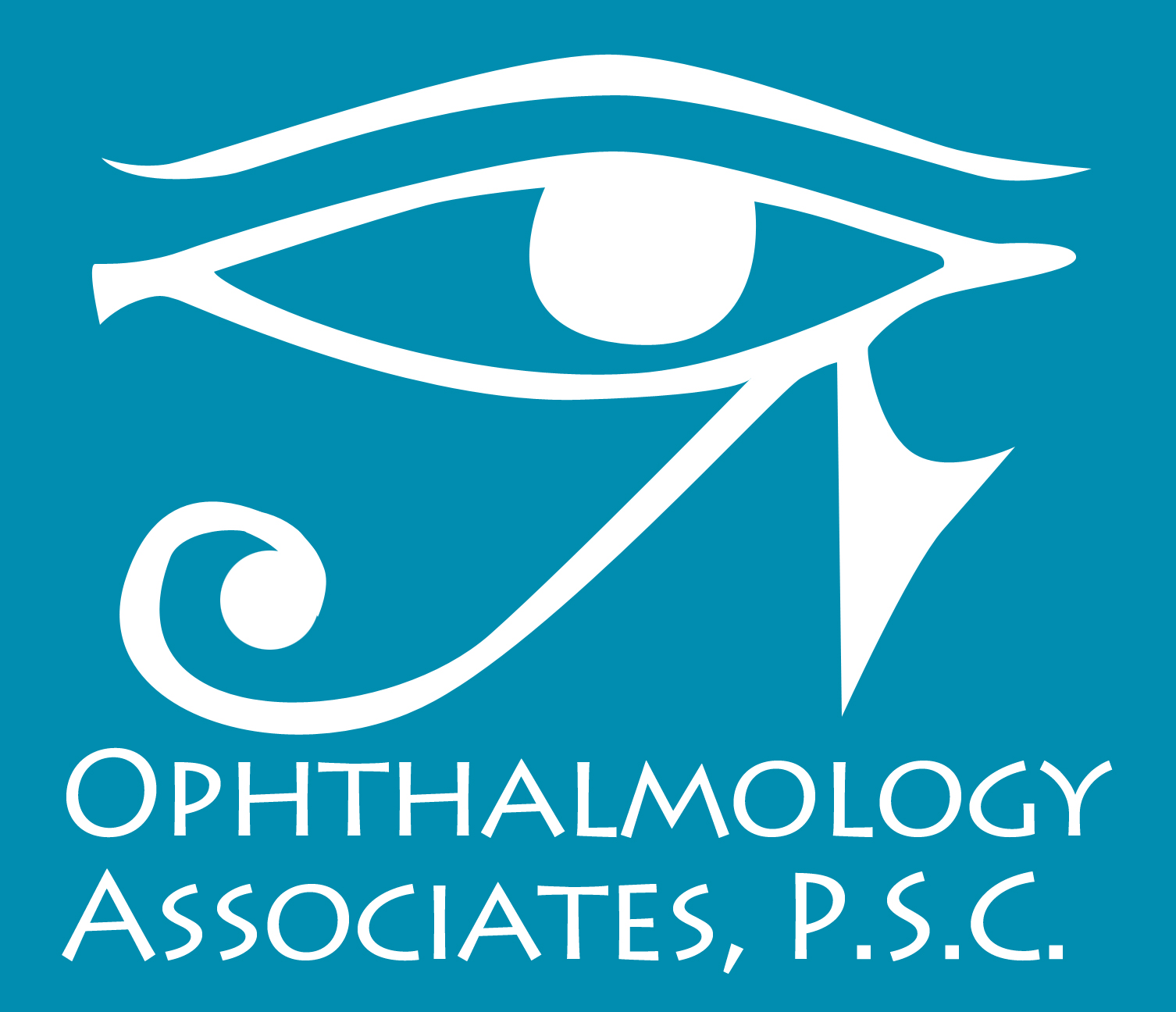Detached and Torn Retina
What is the retina?
 The retina is a nerve layer that is located at the back of the eye. It senses light and sends images to your brain. Think of the eye like a camera. The lens in the front of the eye focuses light onto the retina. Think of the retina as the film that lines the back of the camera.
The retina is a nerve layer that is located at the back of the eye. It senses light and sends images to your brain. Think of the eye like a camera. The lens in the front of the eye focuses light onto the retina. Think of the retina as the film that lines the back of the camera.
What is a retinal detachment?
A retinal detachment occurs when the retina is pulled away from its normal position. When the retina is detached, the retina does not work. Vision is blurred, just as a photograph would be if the film were damaged or loose inside the camera. A retinal detachment is a very serious problem that can cause blindness unless it is treated.
What causes a retinal detachment?
A clear gel called vitreous fills the middle of the eye. The vitreous may pull away from its attachment to the retina. Usually this does not cause problems. However, if the vitreous pulls hard enough to tear the retina, fluid may pass through the retinal tear, lifting the retina from the back wall of the eye, much like wallpaper can peel off a wall.
The following conditions increase the chance of having a retinal detachment:
- nearsightedness;
- previous cataract surgery;
- severe injury;
- glaucoma;
- previous retinal detachment in your other eye;
- weak areas in your retina that can be seen by your retinal doctor family history of retinal detachment
What are the warning symptoms of a retinal detachment?
The following are early symptoms that may indicate the presence of a retinal detachment:
- flashing lights;
- new floaters;
- a shadow in the periphery of your field of vision;
- a gray curtain moving across your field of vision.
These symptoms don’t always mean your retina is detached; however, you should see your retina doctor as soon as possible if any of these symptoms occur.
A retinal detachment can be diagnosed during an eye examination in which the pupils of your eyes are dilated. Only after careful examination can your retina doctor tell whether a tear or an early retinal detachment is present.
What treatment is needed?
Retinal tears are usually treated with laser or cryotherapy (freezing), which seals the retina to the back wall of the eye. These treatments are usually performed in the office by a retina doctor. The treatments cause little or no discomfort, and usually prevent retinal detachment.
Retinal Detachments
Almost all patients require surgery in a hospital or surgical center to return the retina to its proper position. There are several ways to fix a detached retina. The decision on the type of surgery and anesthesia to use depends upon the characteristics of your detachment.
In each of the following methods, your retina doctor will locate and repair the retinal tears with either the use of a laser or cryotherapy to seal the tear.
Scleral Buckle
This procedure involves placing a flexible band (scleral buckle) around the eye to counteract the force pulling the retina out of place.
Pneumatic Retinopexy
In this procedure, a gas bubble is injected into the vitreous space inside the eye. The bubble pushes the retinal tear closed against the back wall of the eye. (Sometimes this can be done in the retina doctor’s office).
Vitrectomy
In this procedure, the vitreous gel, which is pulling on the retina, is removed from the eye and usually replaced with a gas bubble. Your body’s own fluids will gradually replace the gas bubble. At times, a vitrectomy is combined with a scleral buckle.
Will your vision improve?
Vision may take many months to improve and in some cases may never return fully. Unfortunately, some patients do not recover any vision. The more severe the detachment, the less vision may return. It is very important to see your retina doctor at the first sign of any trouble as the chances for improved vision are greater when detected and treated early.

